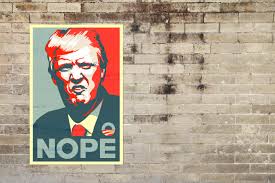Presidential-hopeful Donald Trump announced his bid for the presidency and outlined his vision on June 15, 2015.
“I would build a great wall, and nobody builds walls better than me, believe me, and I’ll build them very inexpensively, I will build a great, great wall on our southern border. And I will have Mexico pay for that wall.”
President Trump’s main argument for the wall is to prevent illegal immigration and drug smuggling. In a national address to the public arguing the case for his wall, Trump said, “There is a growing humanitarian and security crisis at our southern border.”
The president is demanding $5.7 billion for a physical barrier along the southern border of the United States and he will not sign any appropriations to reopen the federal government until he gets that $5.7 billion. Unfortunately for Trump and the rest of America, a physical wall is a waste of money.
First off, no one knows how much a physical barrier would cost.
The Trump administration and the Republican Party don’t even know. Trump, Paul Ryan, and Mitch McConnell have said between $12 and $15 billion to construct a wall.
A 2017 Department of Homeland Security internal report seen by Reuters puts the estimated cost at $21.6 billion. The Washington Post puts the estimate at $25 billion. Senate Democrats put the estimate at $70 billion. No matter whose estimate is used, just like roads, infrastructure needs maintenance. It will cost even more to maintain the wall and that money will have to be paid in the future.
The supposed need for the wall isn’t what Trump makes it sound like either.
Illegal immigration is hard to pin point, but it is measured by Pew Research by using the U.S. census surveys and separate demographic research. The latest estimate puts illegal immigration at its lowest point since 2004.
The drop could be incidental. Perhaps changing economic conditions have lessened the need for crossing the border illegally. It could also be that the increase in border agents from 4,000 to 20,000 and innovations in surveillance and patrolling (the so called “virtual wall”) have made the attempt too difficult.
Whatever the case, it’s hard to argue the need for an extreme physical barrier when the levels of illegal immigration aren’t there to justify its cost. Not to mention that the government would have to go through the quagmire of seizing citizens’ land, destroying local ecology, and disrupting local commerce.
Trump also wants the wall to stem the flow of drugs coming into the United States.
Trump’s own argument is that mitigating the death and destruction as well as disrupting an illegal multibillion dollar industry makes a physical barrier essential. It’s simple enough logic. If drugs can’t get in to the United States, then they can’t kill or harm people, and drug cartels can’t make money.
The problem is that most drugs don’t come through the open border; most come through legal ports of entry. In the heroin section of the Drug Enforcement Agency’s 2018 National Drug Threat Assessment, it says, “a small percentage of all heroin seized by [Border Patrol] along the land border was between Ports of Entry,” and that, “the majority of the flow is through [private vehicles] entering the United States at legal ports of entry.”
Nowhere in the report does the DEA specifically mention massive amounts of drugs flowing through the desert and into the United States.
The president is wrong. The wall is not needed. The wall will not stop drugs.
There is no massive wave of migrants that only a wall could stop rather than the 20,000 border agents, existing barriers, drones, helicopters, motion sensors, etc. The wall is an ugly, ineffective solution to an already mitigated problem that is not worth the longest government shutdown in U.S. history.

